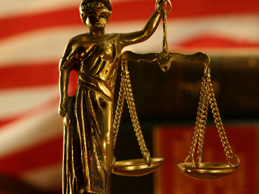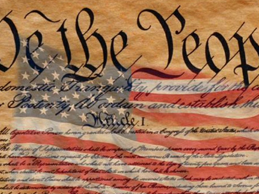People v Bell
2015 NY Slip Op 01812
Appellate Division, Second Department
Decided on March 4, 2015
Blog by: Stephen N. Preziosi Esq., Criminal Appeals Lawyer
Batson Challenges And Jury Selection In New York
The Appellate Division, Second Department protects due process, reverses a criminal conviction, and orders a new trial where prosecutor excluded jurors based upon race.
Issue: Whether the facially race-neutral reasons proffered by the prosecutor for the use of peremptory challenges against two prospective black jurors were pre-textual reasons to improperly exclude them on the basis of race warranting a new trial?
Summary: Defendant appealed a judgment of the Supreme Court, Kings County, rendered November 17, 2010, convicting him of manslaughter in the first degree, upon a jury verdict, and imposing sentence. He argued that his conviction should be overturned because he was not given a fair trial required by constitutional due process. The Appellate Division, Second Department agreed, reversed the judgment, and ordered a new trial.
See Also: The Border Exception Rule To The Search Warrant Requirement
Holding: The Appellate Division, Second Department reversed the judgment on the law and as a matter of discretion in the interest of justice and ordered a new trial finding the defendant was denied a fair trial because the prosecutor exercised peremptory challenges in a discriminatory manner to exclude two black prospective jurors.
 Facts: Before being tried in criminal court, defendant’s counsel and the prosecutor sought to pick a jury in accordance with due process. During jury selection, a prospective juror indicated that his position as a church deacon would not affect his decision. Notwithstanding, the prosecutor employed a peremptory challenge to strike a deacon because it was “just [his] feeling that it may be difficult having [someone in] that position to then sit in judgment of someone.” However, the prosecution did not ask any probing questions to explore the “feeling”.
Facts: Before being tried in criminal court, defendant’s counsel and the prosecutor sought to pick a jury in accordance with due process. During jury selection, a prospective juror indicated that his position as a church deacon would not affect his decision. Notwithstanding, the prosecutor employed a peremptory challenge to strike a deacon because it was “just [his] feeling that it may be difficult having [someone in] that position to then sit in judgment of someone.” However, the prosecution did not ask any probing questions to explore the “feeling”.
With respect to a second prospective juror, the prosecutor exercised a peremptory challenge because he was “shaking his head in agreement” with a white juror, who was explaining the trouble she would have in reaching a verdict and “deciding the outcome of someone else’s life.” However, the second prospective juror indicated that he could convict if the prosecution proved its case beyond a reasonable doubt. The white juror had been challenged by the prosecution for cause, but that challenge was denied, and the prosecution did not use a peremptory challenge to strike her as a juror.
Ultimately, the jury was picked, the trial took place, and defendant was convicted of manslaughter in the first degree on November 17, 2010 in the Supreme Court, Kings County.
 Legal Analysis: In ordering a new trial, the Second Department relied upon the constitutional clauses affording all criminal defendants due process and equal protection under the laws including the right to a fair trial by an impartial jury of one’s peers (U.S. CONST. AMEND. VI; N.Y. CONST. Art. 1, § 6). For background, both the prosecution and defense counsel are permitted to select a jury during a criminal trial, which includes the right to object to a potential juror. This is called a peremptory challenge, which under New York law can be made without reason requiring the court to exclude the person challenged from service (Criminal Procedure Law § 270.25(1)). However, a party may not strike a potential jury on the basis of race or gender (Batson v. Kentucky, 476 U.S. 79[1986]; J.E.B. v. Alabama, 511 U.S. 127[1994]).
Legal Analysis: In ordering a new trial, the Second Department relied upon the constitutional clauses affording all criminal defendants due process and equal protection under the laws including the right to a fair trial by an impartial jury of one’s peers (U.S. CONST. AMEND. VI; N.Y. CONST. Art. 1, § 6). For background, both the prosecution and defense counsel are permitted to select a jury during a criminal trial, which includes the right to object to a potential juror. This is called a peremptory challenge, which under New York law can be made without reason requiring the court to exclude the person challenged from service (Criminal Procedure Law § 270.25(1)). However, a party may not strike a potential jury on the basis of race or gender (Batson v. Kentucky, 476 U.S. 79[1986]; J.E.B. v. Alabama, 511 U.S. 127[1994]).
So, the majority court applied the three-step test established by the Supreme Court in Batson to assess whether the prosecutor’s peremptory challenges were used to exclude two of the potential jurors on the basis of race (People v. Smocum, 99 N.Y.2d 418, 421[2003]). Under the Batson inquiry, the moving party must first make a prima facie demonstration of purposeful discrimination by “showing that the facts and circumstances of the voir dire raise an inference that the other party excused one or more jurors for an impermissible reason” (Smocum supra 99 N.Y.2d at 421). Once demonstrated, the burden shifts to the adversary to provide a facially neutral explanation for the challenge to overcome the inference of discrimination (People v. Allen, 86 N.Y.2d 101, 109[1995]). If facially neutral reasons are provided, the burden shifts back to the moving party to prove purposeful discrimination so that the trial court can determine if the proffered reasons are pretext for improper exclusion (People v. Hacker, 15 N.Y.3d 625, 634-635[2010]).
Here, the Second Department limited its review to the third Batson inquiry (pre-textual purposeful discrimination) because there was no dispute that the first two steps were satisfied. In doing so, it found that the prosecutor improperly used peremptory challenges to exclude two potential jurors based upon their race. As to the first prospective juror, the prosecutor failed to explain how employment as a church deacon related to the factual circumstances of the case or qualifications to serve as a juror. Further, there was no evidence that the prosecutor questioned the deacon’s convictions regarding judging others. As to the second prospective juror, the prosecutor failed to exercise a peremptory challenge to strike a white juror who actually stated that she would have trouble “deciding the outcome of someone else’s life”. However, the prosecution objected to the second prospective juror who not only said that “he could convict if the prosecution proved its case beyond a reasonable doubt”, but also agreed with the white juror that he would have trouble “deciding the outcome of someone else’s life”.

